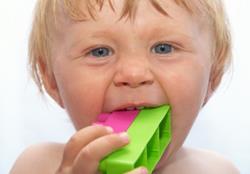Child Choking Hazard Lawyer
Children tend to be highly curious and inquisitive beings that test out foreign objects with all five senses. When they choose to put items into their mouths to taste them, however, they run the risk of choking – especially if the object in question is small enough to be ingested or become lodged in a child’s windpipe.
According to a study conducted by the Consumer Product Safety Commission (CPSC), choking on children’s toys and other children’s products is the leading cause of death among youngsters. In addition, products with long, rope-like features, such as blind pulls or swings, may pose risks of strangulation to children who play or come into contact with such objects.
If your child has suffered a choking injury as a result of someone’s negligence or a defective toy or other product, you may be entitled to compensation from the party or parties responsible. Contact child choking and strangulation hazards personal injury lawyer Jeffrey Killino at 877-875-2927 to learn more about your legal options.
The Consumer Product Safety Commission
The Consumer Product Safety Commission (CPSC) was formed in 1972 in an effort to protect consumers from faulty or defective products that have been put on the market. This governmental group has the following responsibilities:
- Setting product standards
- Requesting recalls of hazardous products
- Banning dangerous items
- Performing research on potentially dangerous consumer products

While this group is constantly on task with its attempts to protect the general public from dangerous products, not all hazardous items are found and removed. Each year, dangerous products such as poorly designed or manufactured cribs kill hundreds of children nationwide through choking injuries or strangulation. In fact, the CPSC has designated cribs and dangerous toys for young children the defective items most suited for recall. The American Society for Testing and Materials International (ASTM International) also promulgates standards for product safety and manufacturers often advertise that their products meet ASTM standards.
Dangers to Children
Toys and products with small, removable parts pose significant choking hazards for young children. Poorly manufactured goods may break into pieces small enough to creating choking dangers, as well. Items such as window cords, swing sets, jewelry items, or clothing drawstrings may create strangulation risks. Manufacturers have a duty to create safety devices for such items that allow parents to keep long cords from window blinds, for example, out of children’s reach.
Manufacturers also have a duty to warn consumers of the risks associated with their products and to label them for a targeted age range. Failure to do so may warrant legal action against the company and anyone in the chain of the product’s distribution.
Legal Liability for Children’s Choking Injuries
An individual or entity (such as a daycare center or school) entrusted with the responsibility of caring for a child may be liable for the injuries sustained by that child as a resulting of choking on an item to which the child gained access as a result of the individual’s or entity’s negligence. The manufacturer of a product as well as anyone in the chain of distribution of the product may also be held liable for a child’s choking injury if the product is determined to be defective and the defect is found to have been a cause of the child’s choking injury.
Product Liability Actions for Injuries Caused by Products that Pose Choking Hazards to Children
A product may be found to be defective in its manufacture or design or in the failure of the manufacturer or seller of the product to warn consumers of the product’s dangers. When such a defect is determined to have been a cause of a child’s choking injury, the manufacturer and anyone in the chain of the product’s distribution may be found liable in a product liability action for the injuries sustained by the child.
Such actions have been brought against toy manufacturers as well as manufacturers of products not intended for a child’s use but reasonably knowable by a manufacturer to be products to which a child is likely to be exposed. Thus, the manufacturer of small button batteries, for example, which pose extreme and devastating hazards to children who may swallow or choke on such a battery, may be liable for the defective packaging of button batteries if the packaging is found to have been inadequate to prevent young children from gaining access to the batteries and to have been a cause of the injuries sustained by a child who swallowed or choked on such a battery.
Negligence Actions for Children’s Choking Injuries
Parties in whose care a child has been entrusted have a duty to exercise reasonable care for the safety and well-being of such a child while that child is within the party’s care. If a daycare supervisor or other adult whose duty it is to supervise a child allows a child to gain access to a toy or other item that results in a choking injury to that child, for example, the party may be found liable in an action for negligence if the party’s negligent supervision is determined to have been a cause of the child’s choking injury.
Contact Us
If your child suffered a choking or strangulation injury from a defective toy or product or as a result of someone’s negligence, contact child choking hazard lawyer Jeffrey Killino at 877-875-2927 for compassionate and experienced assistance with your case.




